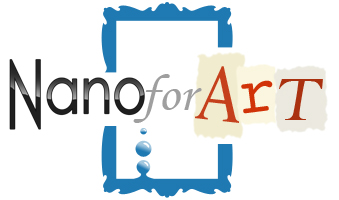Prof. Enzo Ferroni (1921-2007) was one of the first scientists to apply a scientific approach to the conservation of cultural heritage. After the catastrophic flood of the river Arno that hit Florence in 1966, Ferroni began to collaborate with restorers and conservators, using his physical chemistry background, in order to help them save some of the masterpieces of Italian Art.
Prof. Ferroni, together with one of his students, prof. Piero Baglioni, founded the inter-university
consortium CSGI with the aim, besides the others, to carry on the marriage between nanoscience and art conservation.
CSGI (Research Center for Colloids and Nanoscience) was established in Firenze, in December 1993. It was officially recognized by the Italian Government in 1994, and is under the supervision and control of the Italian Ministry for University and Scientific Research (MIUR). Since 1995
CSGI became one of the first research institutes to recognize the potential of applying nanoscience to art conservation and created an extended network with conservation centers and academic institutions worldwide.
CSGI research in the field of conservation science is mainly carried on at the Florence Unit, where researchers have been working in the developing of innovative materials and methodologies for the preservation of cultural heritage.
Tenths of papers were published by
CSGI on some of the most prominent peer-reviewed scientific journals, which deal with the subject of nanoscience applied to art conservation.
In 2008 a collaboration with
CTS company began for the distribution of
Nanorestore®, the first nanolime dispersion for the consolidation of carbon-based wall paintings and stone, which reached the market.
In 2012-2104
CSGI was the coordinator of a EU-funded research project named
NANOFORART, which had the aim of developing and experimenting new nano-materials and responsive systems for the conservation and preservation of movable and immovable artworks. The project objectives also included the assessment of the applicability of materials, the study of the long-term behaviour of the products and of the treated artworks, and the development of industrial processes for the transfer of technology to market and production of the nanomaterials on medium and large scale.
With the end of the project and the long-time experience in the field, it was decided that some of the materials developed at
CSGI were ready to hit the market. Therefore, the "CSGI - Solutions for Conservation of Cultural Heritage" website was built with the aim of make them accessible to conservators and restorers for their everyday practice.
Due to the outstanding results of NANOFORART, another project, named
NANORESTART, was funded by the EU. This new project (2015-2018), coordinated by
CSGI, will focus on the synthesis of novel poly-functional nanomaterials and on the development of highly innovative restoration techniques to address the conservation of a wide variety of materials mainly used by modern and contemporary artists. Some of these products, once ready to hit the market, will be available on this website.
People currently involved in the production and management of "CSGI - Solutions for Conservation of Cultural Heritage" is:
 |
 |
 |
Piero Baglioni*
|
Rodorico Giorgi
|
Giovanna Poggi
|
 |
 |
 |
Michele Baglioni*
|
Patrizia Zitelli
|
Filippo Baldereschi
|
 |
 |
 |
| Daniela Vullo |
Teresa Guaragnone |
David Chelazzi |
(*) No kinship exists among these people.













